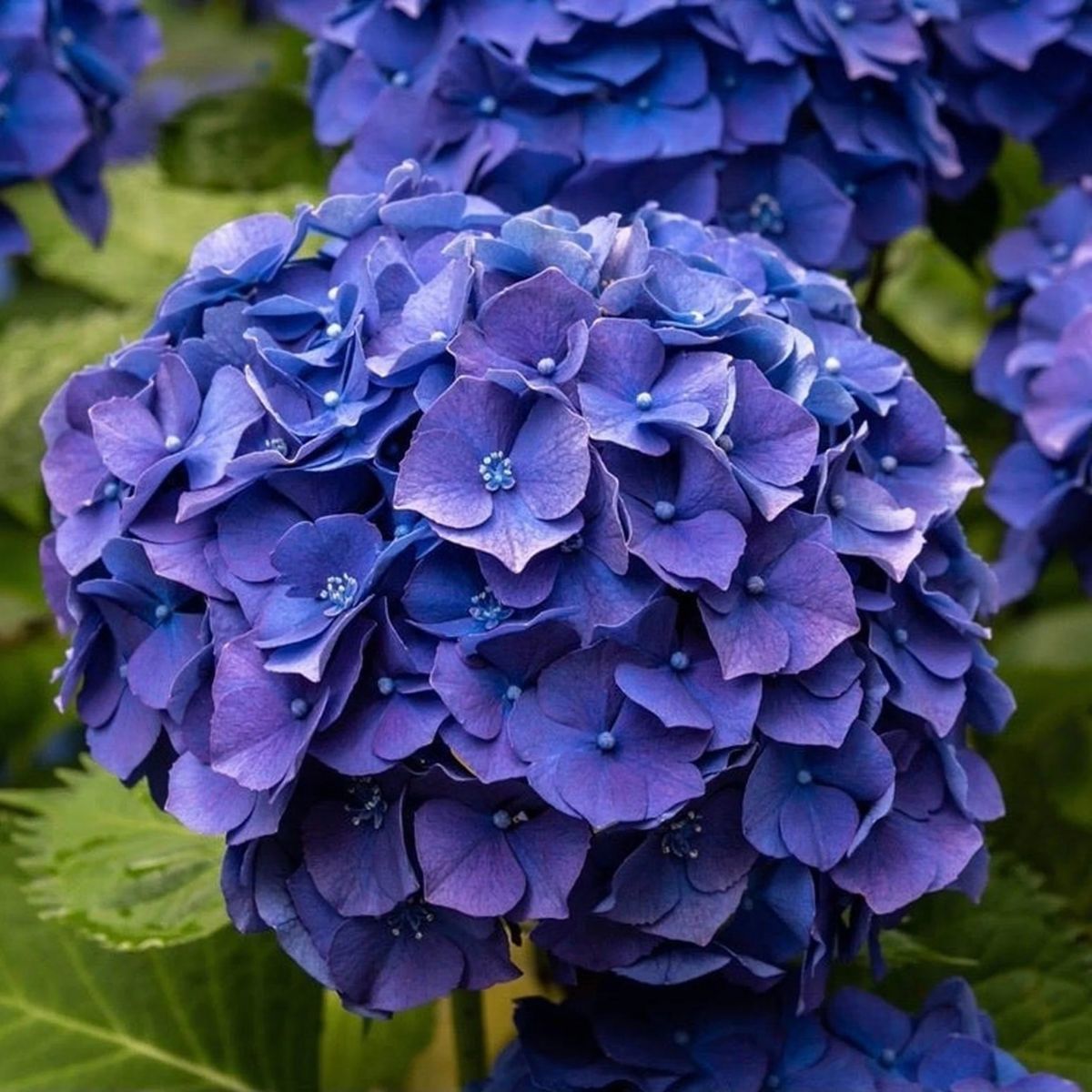Hydrangeas command attention with their billowing clusters of blooms in hues that shift from pink to blue depending on soil conditions. Their classic appeal makes them a staple in both formal and cottage-style gardens, and their long blooming period ensures months of floral display.
More than just a summer showstopper, hydrangeas also symbolize gratitude and heartfelt emotion. With minimal fuss and proper care, these flowering shrubs bring refined charm and seasonal drama to borders, hedges, and containers alike.

Portrait of the Hydrangea
Hydrangeas belong to the Hydrangeaceae family and include several popular species, such as Hydrangea macrophylla (bigleaf), Hydrangea paniculata (panicle), and Hydrangea arborescens (smooth hydrangea).
- Type: Deciduous flowering shrub
- Family: Hydrangeaceae
- Common Names: Hydrangea, Mophead, Lacecap, Snowball bush
Foliage and Form
Hydrangeas typically feature large, serrated leaves that provide a lush green backdrop to their dramatic flower heads. Growth habits vary by species—some are rounded and compact, while others arch gracefully or grow upright.
- Height: 1–3 m (3–10 ft), depending on variety
- Spread: 1–2.5 m (3–8 ft)
- Growth Habit: Rounded, bushy; some climbing types
Blooms and Fragrance
Hydrangeas bloom in rounded mopheads or delicate lacecaps, with flowers that can change color depending on soil pH. While not fragrant, their visual impact is unmatched.
- Bloom Time: Late spring to early fall
- Color: Blue, pink, purple, white, green
- Fragrance: Generally mild to none
The Right Time to Plant, Prune, and Enjoy Hydrangea
| Month | Planting | Flowering | Pruning |
|---|---|---|---|
| January | ❌ | ❌ | ✅ Light shaping (if needed) |
| February | ✅ Bare-root (mild zones) | ❌ | ✅ Cut back old stems (smooth types) |
| March | ✅ Prime time for planting | ❌ | ✅ Structural pruning (before buds) |
| April | ✅ | ✅ Begins in warm areas | ❌ |
| May | ✅ | ✅ Peak in many zones | ❌ |
| June | ❌ | ✅ Continues blooming | ❌ |
| July | ❌ | ✅ | ✅ Deadheading spent blooms |
| August | ❌ | ✅ Late blooms | ✅ Light trimming if needed |
| September | ✅ Container-grown | ✅ (varies by type) | ✅ Post-bloom clean-up |
| October | ✅ | ❌ | ✅ Cut flowers for drying |
| November | ✅ Dormant season planting | ❌ | ✅ Prepare for winter (mulch base) |
| December | ❌ | ❌ | ✅ Remove dead or crossing branches |
✅ = Recommended ❌ = Not advised
Watering, Sunlight, and Environment for Hydrangea
Watering
Hydrangeas have thirsty roots, especially in warm climates. Keeping the soil evenly moist is key.
- When to Water: 2–3 times a week in heat
- How Much: Soak deeply to reach roots
- Watch out for: Wilting during mid-day sun; dry spells
Sunlight
Most hydrangeas prefer morning sun and afternoon shade. Too much direct sun can scorch the leaves, while too much shade reduces blooming.
- Ideal Exposure: Partial sun (4–6 hours)
- Shady Sites: Fewer flowers, leggier growth
Indoor vs Outdoor
Hydrangeas are best outdoors but can be temporarily grown indoors in containers. However, for long-term health, they need garden space.
- Best Location: Garden beds, borders, hedges, large containers
- Avoid: Small indoor pots long-term
Temperature
Hydrangeas are fairly adaptable but prefer cool to moderate climates. Some types are more cold-hardy than others.
- Optimal Range: 10–25°C (50–77°F)
- Hardiness Zones: USDA 3–9 (varies by species)
- Protection Tip: Mulch in cold zones; avoid frost-prone spots
Ideal Soil Conditions for Growing Hydrangea
| Soil Feature | Optimal Condition | Why It Matters |
|---|---|---|
| Soil Type | Rich, loamy | Supports bloom and foliage development |
| Texture | Moist but well-aerated | Prevents compaction and root suffocation |
| Drainage | Well-draining | Avoids root rot |
| Moisture | Consistently moist | Encourages steady growth |
| Soil pH | 5.2–6.2 (for blue flowers); 6.5–7.0 (for pink) | Influences flower color |
| Fertility | Moderate | Too much nitrogen = lush leaves, no flowers |
Common Problems & Solutions
| Issue 🐾 | Symptoms 🔍 | Solutions 🛠️ |
|---|---|---|
| Leaf Scorch 🌞 | Brown edges, wilting in sun | Provide afternoon shade, water regularly |
| No Blooms 🌿 | Lots of foliage, no flowers | Avoid pruning new wood (depends on type) |
| Powdery Mildew 🍃 | White coating on leaves | Improve airflow, use organic fungicide |
| Aphids 🐜 | Sticky residue, curled leaves | Wash off or apply neem oil |
| Yellow Leaves 🍂 | Nutrient deficiency, poor drainage | Adjust feeding, check pH |
Hydrangeas offer both visual splendor and emotional depth. From dramatic blue mounds to delicate pink domes, they adapt beautifully to garden styles and soil chemistry. With thoughtful care, pruning, and placement, this classic shrub will delight season after season, making your garden bloom with elegance.